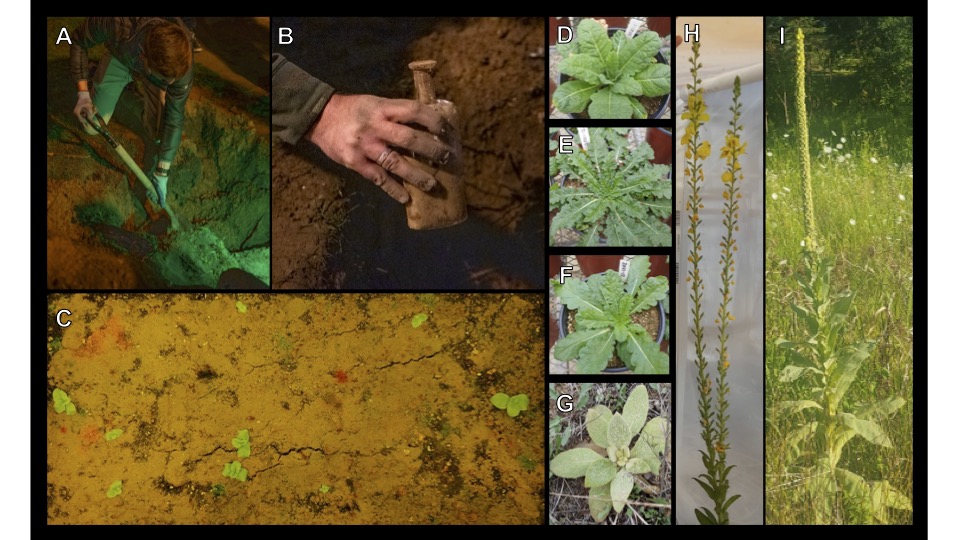Beal seed viability experiment yields a hybrid surprise
A new paper authored by Dr Margaret (Grace) Fleming (Assistant Professor PSM) describing the results from the 16th Beal bottle was accepted by American Journal of Botany and is NOW available online.

A new paper describing the results from the 16th Beal bottle was accepted by American Journal of Botany and is now available online. The paper, titled "The 141-year period for Dr. Beal's seed viability experiment: A hybrid surprise" is authored by Dr Margaret (Grace) Fleming (Assistant Professor PSM), Lauren Stanley (postdoc - PLB), Robyn Zallen (Master's student - PSM), Matthew Chansler (Research Assistant - PSM), Lars Brudvig (associate professor - PLB), David Lowry (associate professor - PLB), Marjorie Weber (formerly assistant professor at PLB, now associate professor at U of M), and Frank Telewski (emeritus professor - PLB).
“The big picture is a) twenty seeds germinated!” Fleming says, “They were 141 years old! and b) molecular genetics confirmed that these plants were not a species that Beal intentionally included in the bottles.”
The twenty seeds were all from the same genus, Verbascum. “This is that same genus that germinated well in the year 2000 (23 plants grew from that bottle). The molecular genetics work confirmed the phenotypes we saw, which is that the plants were Verbascum blattaria (moth mullein), and one hybrid of Verbascum blattaria and Verbascum thapsus (common mullein). Beal stated that he included only Verbascum thapsus seeds, so some mix-up must have happened while the bottles were being prepared.
“We're going to continue working with Verbascum, both V. blattaria and V. thapsus, to see what could explain their exceptional longevity in the soil seed bank. We now have a genome of V. blattaria, sequenced from one of the plants that grew from the bottle, which is an excellent resource for starting to look for genetic and molecular explanations. (The genome was sequenced by Corteva as part of the International Weed Genomics Consortium - the paper describing that work will come out in December.)

The Beal Seed Experiment: In 1879, Dr. William Beal buried 20 glass bottles filled with seeds and sand at a single site at Michigan State University. The goal of the experiment was to understand seed longevity in the soil—a topic of general importance in ecology, restoration, conservation, and agriculture—by periodically assaying germinability of these seeds over a 100-year period. “The interval between germination assays has been extended and the experiment will now end after 221 years, in 2100.
LINK TO ARTICLE: https://bsapubs.onlinelibrary.wiley.com/doi/abs/10.1002/ajb2.16250
SEE ALSO: https://www.canr.msu.edu/news/bringing-the-beal-seed-experiment-into-the-modern-era



 Print
Print Email
Email




